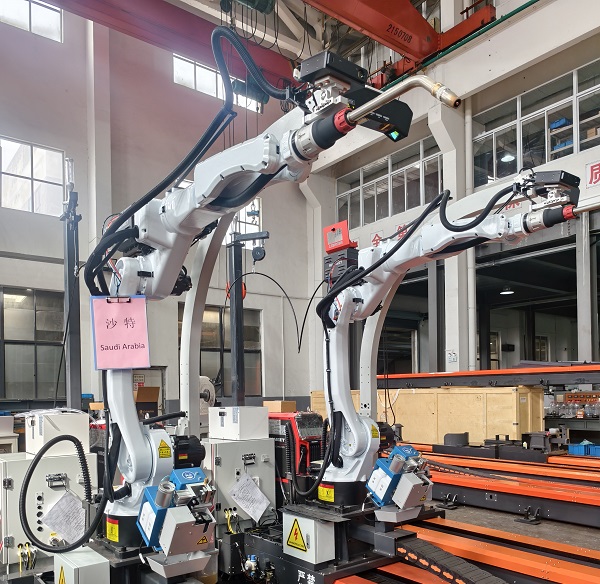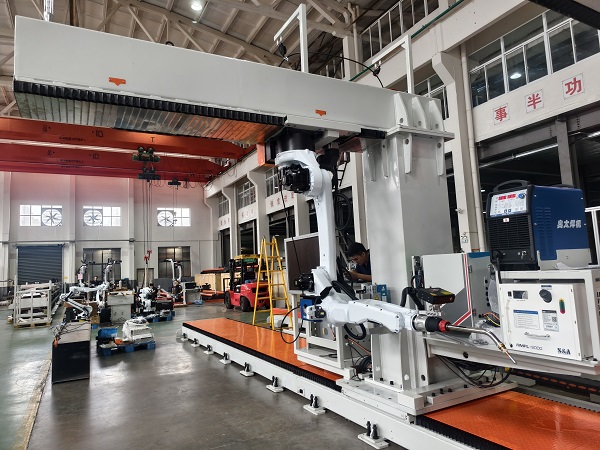Aug. 26, 2025
Modern manufacturing demands precision, speed, and adaptability. As industries face more complex designs and shorter production cycles, custom welding robots have become a practical solution to meet these challenges. Unlike standard machines, they can be tailored to fit unique requirements - helping businesses improve efficiency, reduce costs, and maintain high product quality. Haven, a trusted name in robotic solutions, has already delivered customized welding robots to clients and continues to test and refine equipment to ensure optimal performance.
Robotic welding refers to the use of programmable machines to automate the welding process. These robots combine advanced sensors, arms, and software to perform precise welds on metals and alloys. By reducing human error and ensuring consistent results, robotic welding improves production capacity and safety.
There are several categories of welding robots depending on the application:
Arc Welding Robots – Ideal for joining metals using an electric arc.
Spot Welding Robots – Commonly used in the automotive industry for high-strength welds.
Laser Welding Robots – Provide pinpoint precision for delicate or small-scale projects.
TIG/MIG Welding Robots – Suitable for general industrial applications with different metal types.
Custom Welding Robots – Tailored to meet specific design, size, or production requirements.
With the right choice, companies can streamline their operations and maximize return on investment.
Manual welding still plays a role in small-scale projects or repairs. However, robotic welding has significant advantages when high precision, repeatability, and safety are required. Robots deliver faster cycle times and consistent weld quality, while human welders may face fatigue and errors. That said, integrating custom robotic welding does not eliminate workers - it shifts their roles toward supervision, programming, and quality assurance.

For manufacturers facing tight deadlines and complex designs, the benefits of robotic welding are clear:
Consistency and Accuracy – Robots can perform welds within fractions of a millimeter.
Productivity Boost – Automated systems run faster than manual labor, reducing production time.
Safety – Robots minimize worker exposure to heat, fumes, and sparks.
Cost Savings – Although the initial investment is higher, long-term savings on labor and rework are substantial.
Flexibility – Custom welding robots can adapt to unique part geometries, space constraints, and production needs.
At Haven, engineers specialize in delivering easy-to-customize solutions. From design to deployment, everything can be managed on a single platform with complementary engineering support, ensuring smooth integration into existing production lines.
The process typically involves several steps:
Design and Simulation – Engineers design the welding cell and simulate operations digitally.
Programming – Modern robots require minimal programming knowledge; software platforms allow drag-and-drop customization.
Deployment – Robots are installed, tested, and optimized within the facility.
Operation – Sensors and automation guide the robot through accurate and repeatable welds.
Haven has developed solutions that enable clients to build, simulate, and deploy robotic welding systems in days. Clients can choose their preferred robots, software, and components to create a system that meets both productivity and space requirements.

As industries evolve, robotic welding continues to advance. Key trends include:
AI-Powered Welding – Robots that learn and adjust parameters in real time.
Cloud-Integrated Systems – Centralized monitoring for multiple welding cells.
Collaborative Robots (Cobots) – Robots designed to work safely alongside human operators.
Eco-Friendly Welding – Reduced energy consumption and waste for sustainable manufacturing.
These innovations will make welding robots even more accessible to small and medium-sized enterprises.
Custom welding robots are no longer just for large-scale manufacturers. With flexible, easy-to-deploy solutions, businesses of all sizes can benefit from automation. Haven continues to deliver high-quality robotic welding systems tailored to client needs—helping manufacturers overcome unique challenges, improve safety, and boost productivity.
If you're ready to explore a customized welding solution, contact Haven today.
They are designed to fit specific part geometries, production volumes, and space constraints. This ensures maximum efficiency and adaptability compared to off-the-shelf systems.
Most robotic welding systems achieve accuracy within fractions of a millimeter, ensuring consistent and reliable weld quality across thousands of cycles.
The main challenges include upfront investment, staff training, and integration into existing workflows. However, with the right engineering support—such as Haven provides—these hurdles are quickly overcome.
Navigation
Categories
Get in Touch
Service Hotline
+86 029-82697808
Address
Ruisen-Yunfeng Building, No.29 Nanerhuan East Road, Xi'An 710054 Shaanxi Province, China.